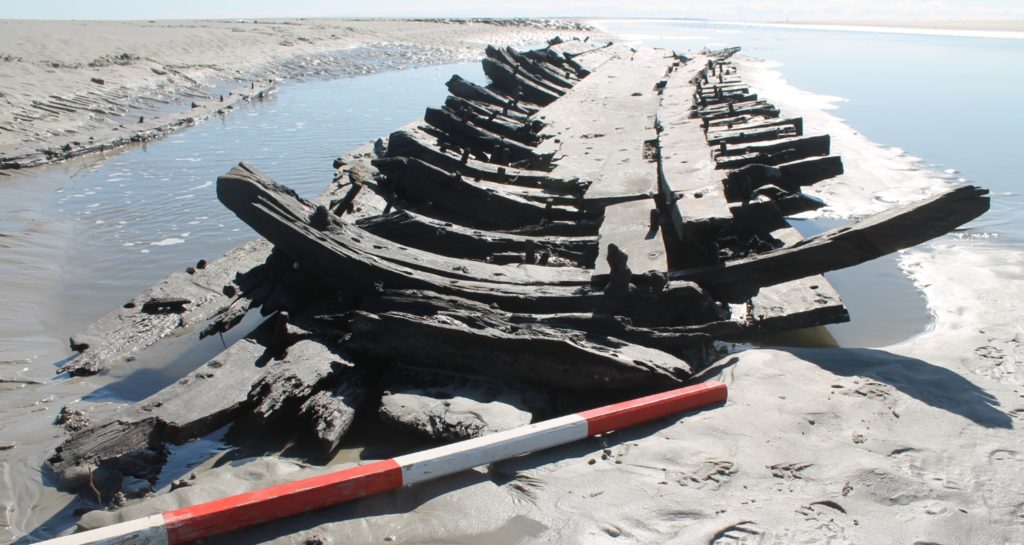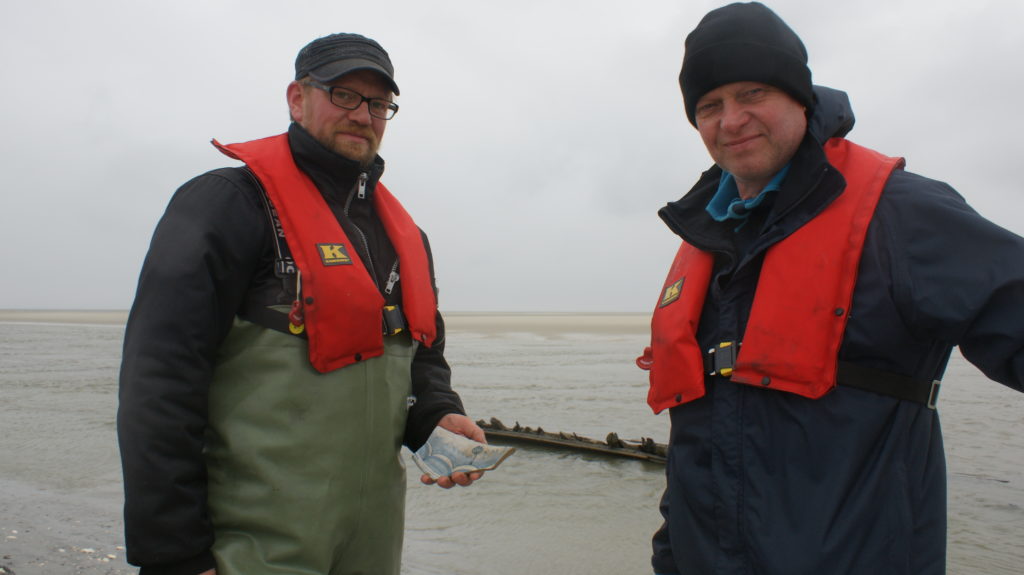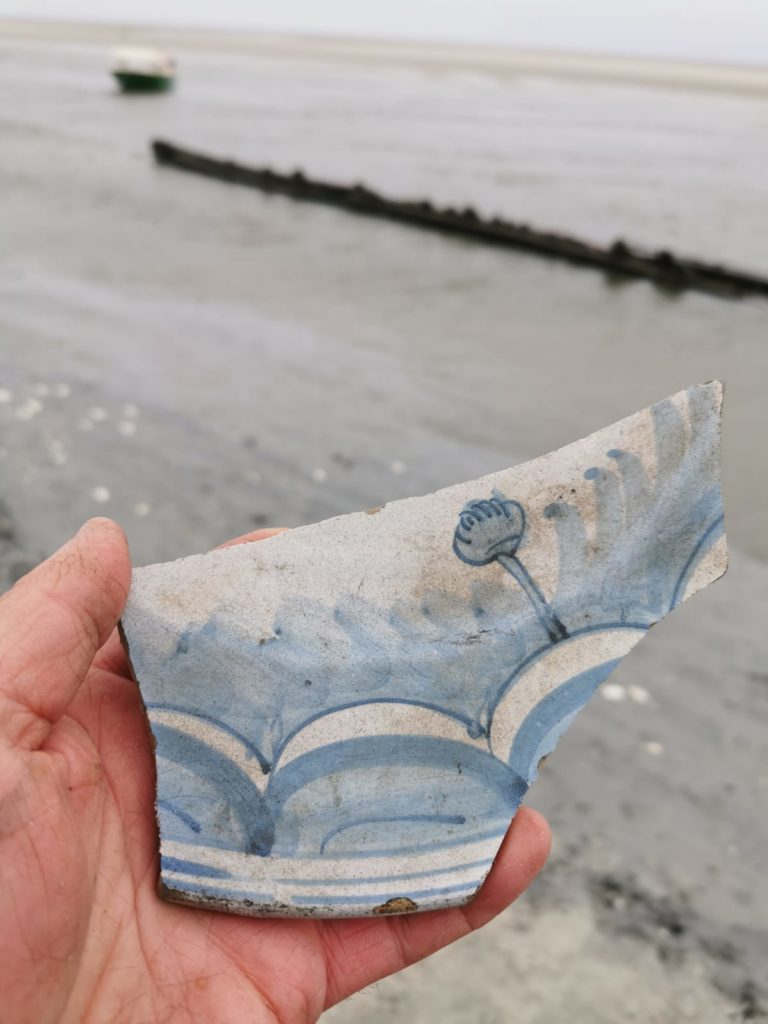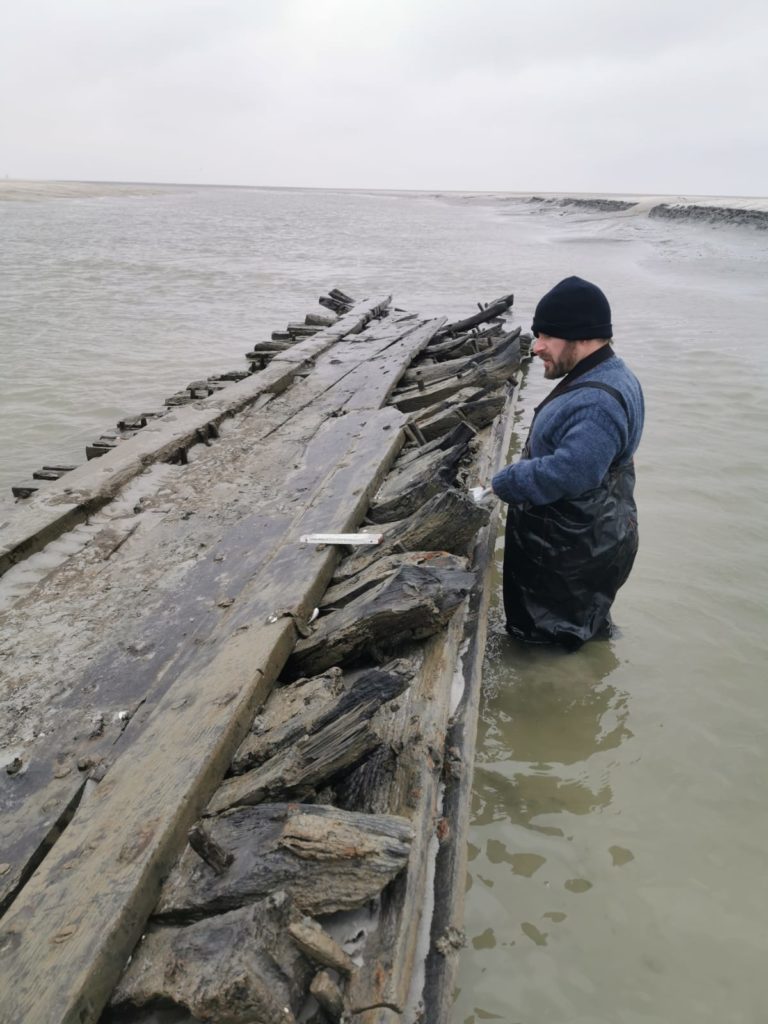A ‘Double Dutch’ construction from the 1st half of the 18th century in a tidal creek near Süderoogsand
From one of the most remote outposts the State Archaeology Department of Schleswig-Holstein (ALSH) received a find report two years ago. A single frame emerged from the sediments of the Blaubach tidal creek, discovered in 2018 by Holger Spreer. As tenant of the small island of Süderoog and ranger of the National Park Wadden Sea, he is one of the very few people who frequents this desolate place.
On a further visit in March 2020, Holger Spreer encountered at the same spot an 18m long section of a shipwreck that has been entirely unearthed by erosion. Due to tidal currents and the exposed location, we were concerned that the wreck might not survive for long in situ. Moreover, the remoteness of the site and the Covid-19 pandemic prevented us from sending out a field team at once. Nonetheless, no time was wasted, and Holger Spreer and his trainee Paul Rusch thankfully volunteered to make a photo-documentation of the wreck and to take wood samples. This measure was carried out by giving them precise instructions, which were admirably followed in every detail. This unique cooperation caught media attention and was aired by the local broadcaster RTL-Nord on 2nd April: https://www.rtlnord.de/nachrichten/besonderer-corona-auftrag-nationalpark-ranger-wird-zu-indiana-jones.html

In late April I had the opportunity to investigate the wreck myself on behalf of the ALSH, which was facilitated by the excellent cooperation of the finder. The preliminary investigation revealed several constructional characteristics, through which the origin of the ship could be inferred.

The dendrochronological analysis, carried out by Dr. Aoife Daly, revealed a felling date of around/after 1733-36. The construction itself is more characteristic for 17th century Dutch shell-first shipbuilding (so-called ‘Dutch flush’), however, which proves that this technique was still practised in the 18th century.
The wreck also features double planking (so-called ‘Double Dutch) and is already the second wreck of this kind in Schleswig-Holstein after the Hörnum Odde Wrack (ca.1690). There are about 12 known ‘Double Dutch’ wrecks worldwide, most were ships of the Dutch East India Company, of with the “Batavia” is arguably the most prominent wreck, which foundered off Australia’s western coastline. But also other vessels had double planking, like whalers heading to Spitzbergen, or sandskuders from Denmark. In close proximity to the wreck a clay pipe and a Dutch fayence were discovered. The latter was common tableware amongst the whealthy and emulated the style of Chinese porcelain in an age when “Made in China” was deemed a mark of quality.




Further results can be expected from further timber analysis and archival research on strandings. Aside from the wreck of the Spanish barque „Ulpiano“ of 1870 and an unknown wooden shipwreck nearby, this is the third historical wreck on Süderoogsand. Due to the strong coastal erosion process, an increasing number of wrecks are discovered in the North Frisian Wadden Sea, like the Japsand wreckage in 2017 and the Hörnum Odde wreck in 2016.
References
- Zwick 2020: D. Zwick, Neues Wrack aus dem 18. Jahrhundert beim Süderoogsand untersucht. In: Archäologie in Deutschland 6, 2020, 64.
- Zwick & Daly (in preparation): D. Zwick and A. Daly, A new 18th- century Dutch-built shipwreck off Hallig Süderoog, Germany (working title).




